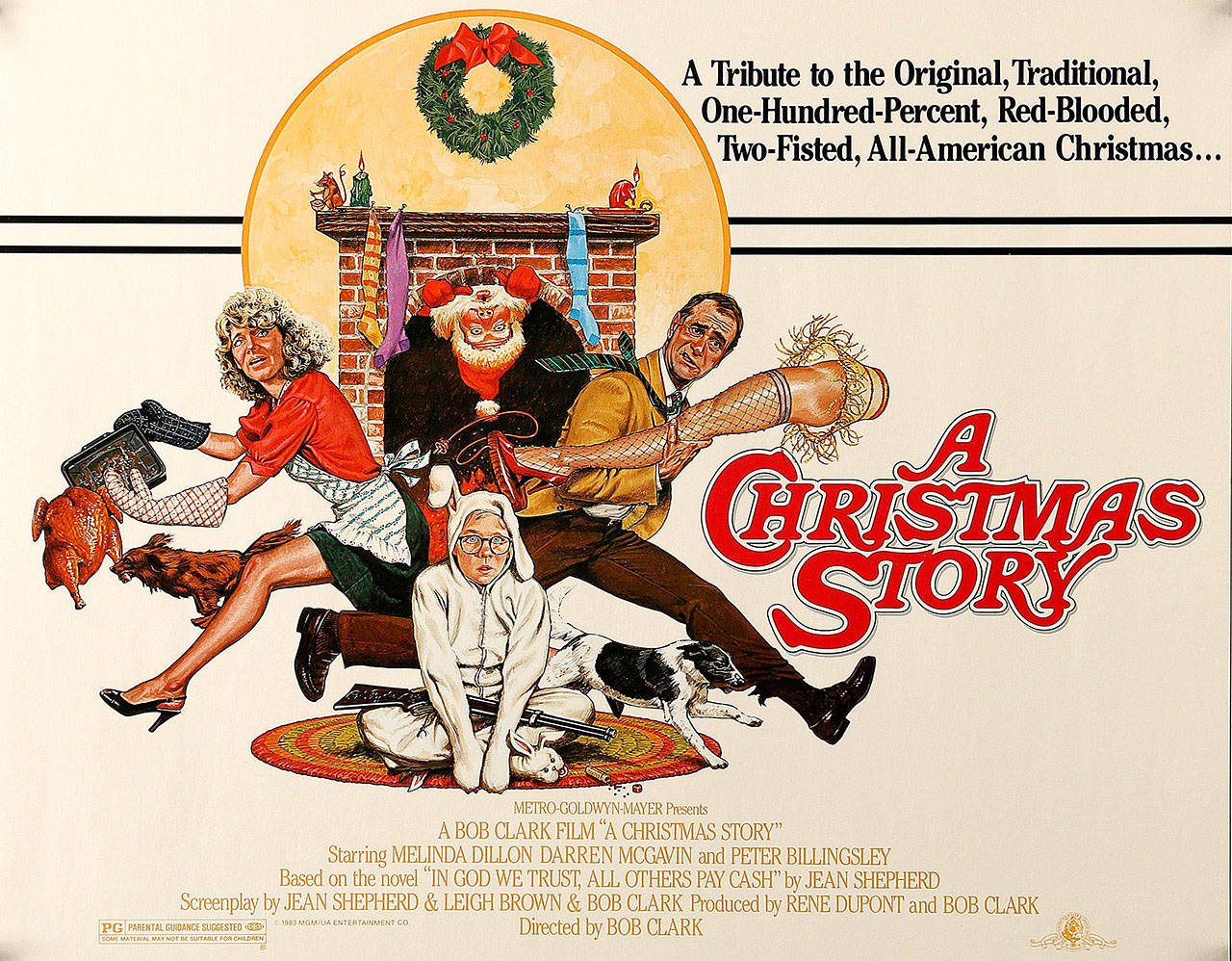Rick’s Picks
By Rick Anderson
If you asked 10 people to name their favorite Christmas movie, you’d probably receive 10 different answers.
One reason is that the category is so broad. It includes classics like “A Christmas Carol” and “Miracle on 34th Street,” musicals such as “White Christmas” and “Holiday Inn,” and more contemporary fantasies such as “Elf” and “The Santa Clause.”
There are also popular movies set at Christmas with only indirect connections to the holiday (“Die Hard” and “Home Alone,” to name two). The classic Christmas song “Silver Bells” was introduced in a decent Bob Hope comedy, “The Lemon Drop Kid,” although hardly anyone associates the song with Hope or the movie.
One film, however, that makes most viewers’ holiday list is “A Christmas Story.” While it was only moderately successful when released in 1983, its popularity has snowballed over the years; and it will again be featured in a Christmas Eve-Christmas Day marathon on the TNT and TBS cable networks.
Nostalgic without descending into abject sentimentality, it’s the type of movie that grows on you. Legendary film critic Roger Ebert initially rated it only three stars, but upgraded his review to four stars for his “Great Movies II” collection two decades later.
The film is based on short stories by humorist Jean Shepherd, who co-authored the screenplay and doubles as the narrator. (He also has a cameo role as the man who directs Ralphie to the rear of a long department-store line waiting for Santa Claus.)
Peter Billingsley stars as Ralphie Parker, a 9-year-old growing up in Indiana during the early 1940s. He wants a Red Ryder air rifle for Christmas, despite his mother’s fear that the BBs will put his eye out.
That’s a pretty thin premise to base a plot for even a 93-minute movie. Fortunately, it represents only one piece of this episodic film’s mosaic.
Linked by Shepherd’s narration, the story also touches on Ralphie’s relationship with his parents (played by Melinda Dillon and Darren McGavin) and kid brother, his encounters with the school bully, his punishment for uttering an obscenity, and a harrowing visit to the department-store Santa. There are also gentle pokes at tacky advertising promotions and inappropriate gifts from distant relatives.
Although often presented with exaggerated humor, these vignettes work because they represent recognizable situations.
Billingsley makes an appealing Ralphie, in part because you seldom catch him acting. He comes across as a normal kid, filled with delusions of grandeur and not above stretching the truth.
Previously best known as the young mother whose son is abducted by aliens in the science fiction classic “Close Encounters of the Third Kind,” Dillon easily transitions to the role of Ralphie’s strait-laced but compassionate mom.
Executives of the MGM studio envisioned Jack Nicholson, of all people, to play the father.
Even though his parenting skills left something to be desired in “The Shining,” Nicholson was versatile enough to play the role. But his arch, cynical screen persona was inappropriate for this character, and his casting would have shifted the film’s focus from the boy to the dad. In any event, Nicholson’s salary demands exceeded the film’s budget.
If Nicholson would have been unorthodox, McGavin represented one of the most out-of-left-field casting choices in cinematic history.
A Spokane native who grew up in Tacoma, McGavin alternated between tough-guy heroes (such as the title character in television’s “Kolchak: The Night Stalker”) and occasional villains during a long career in movies and TV. At 61 when the film was made, he was 27 years older than his on-screen wife.
But director Bob Clark, who had worked with him previously, believed McGavin was “born to play the role” of the blustering father despite his lack of comedy experience. It would be hard to argue the point. He makes the audience see the humanity lurking beneath his character’s grumpy exterior.
Interestingly, Clark resorted to more conventional casting choices — Kieran Culkin as Ralphie and comedy veterans Charles Grodin and Mary Steenburgen as the parents — when he made the sequel “It Runs in My Family” 11 years later. The results were disastrous. According to film historian Leonard Maltin, the sequel was barely released theatrically.
One of the virtues of “A Christmas Story” is that it doesn’t settle for a conventional happy ending.
Neither Ralphie’s first outing with the BB gun nor the family’s intended Christmas dinner works out as planned. But the Parkers find a way to cope.
At the end of this humbug of a year, that message is somehow reassuring.
Rick Anderson, retired sports editor of The Daily World, now is a contributing columnist. Reach him at rickwrite48@gmail.com.



